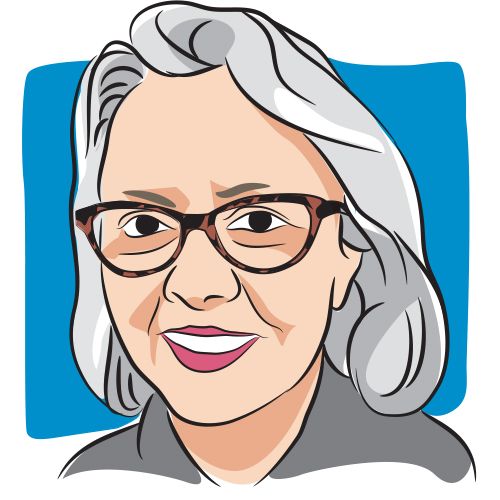Video
Lung Cancer Risk and Screening Recommendations
Transcript:
Philippa Cheetham, MD: Welcome back to CURE Connections®. Building on an earlier segment about education support, we are here today with Carly Ornstein from the American Lung Association and former NFL linebacker, Chris Draft, to discuss lung cancer screening. We also have with us in the studio today, Dr. Kim Sandler from Vanderbilt University. We are talking about lung cancer screening, education, prevention awareness. Welcome back to CURE Connections®. Welcome to the studio, Dr. Sandler.
Kim L. Sandler, MD: Thank you.
Philippa Cheetham, MD: We hear a lot about screening for breast cancer, screening for prostate cancer, but less so about lung cancer. Who should we screen? When should we screen? Should we screen at all?
Kim L. Sandler, MD: So, I think one of the reasons we hear less about lung cancer screening is that it’s a relatively new screening examination as compared to things like mammography, colonoscopy and prostate cancer. We really only gathered the evidence to support lung screening in 2011 and then the programs took a couple years to be clinically implemented. The current recommendations are based on the trial that was published that included over 50,000 patients. Currently, we are screening patients who are aged 55 to 77. There are some insurers who will cover those examinations up to age 80, but we are screening all patients 55 to 77 who have a 30-pack-year history of smoking—so smoking a pack a day on average for 30 years cumulatively over their lifetime—and are either current smokers or former smokers who quit less than 15 years ago.
Philippa Cheetham, MD: So, for patients who are watching this segment, give us a bit more of a breakdown on this definition we hear so much about associated with smoking, the pack-years. How do you calculate that?
Kim L. Sandler, MD: Sure. Pack-years is a way that we can estimate the amount of tobacco exposure that a patient has had over their lifetime. When we gather someone’s smoking history, we say it’s equivalent to gathering their life history. People often change how much they’re smoking because of their life experiences. So, what we like to do is try to accurately represent that as much as we possibly can. If someone smokes two packs a day for 10 years, quits smoking for two years, then decided to smoke again maybe only a pack a day for several years, we take all of that information together and then can calculate how many pack years they’ve had over their entire lifetime.
Philippa Cheetham, MD: We often hear patients say, “Well, I smoked, I never inhaled or I smoked outdoors.” Do these come into the equation for pack years or no?
Kim L. Sandler, MD: No, we really just look at the number of cigarettes. And it is important to note that it is only cigarettes. We’re not screening based on cigars or other types of inhalers. We’re really just looking at cigarette smoke.
Philippa Cheetham, MD: And you’ve already mentioned that this screening program applies to men and women. Does that mean that the risk of getting lung cancer is the same for men and women or do we see more of one gender than the other?
Kim L. Sandler, MD: Right now, our recommendations are only based on age and smoking history. There are some researchers who are supporting going to a risk prediction model that would look at other factors besides that. It would include gender, race, surrogates for socioeconomic status, other things that we’ve seen can predispose to lung cancer. At the moment, the recommendations are the same, man, woman regardless of your race or background.
Philippa Cheetham, MD: You’ve talked about the age for screening, 55 to 77. That’s the age when people are having to be screened for other things and it’s a full-time job just to get your body screened when you hit 50 with mammography, colonoscopy, now lung cancer screening. Do you think that for many patients who are in these categories who we want to screen, do you think lung cancer is lower down the risk of priority for them because we hear less about it?
Kim L. Sandler, MD: Well, I would hope not because lung cancer claims more lives of men and women in this country than any other cancer. So, I think that sometimes we don’t think about that because we think of incidence. In men, prostate cancer is more common. In women, breast cancer is more common. But in terms of deaths from cancer, lung cancer leads both men and women. So, I think it’s something that maybe we don’t talk about as often. I also think there’s a stigma associated with smoking. Some of our patients are reticent to see us because their family members have asked them to quit smoking, they’ve been told they really need to see someone, and they feel responsible because of their smoking history. And we really try to combat that as much as we possibly can and let people know that regardless of the background, regardless of your smoking history, we are here to screen you now. And the program is not only a screening exam but also smoking cessation counseling, and that that is one of the most important things we can do is to help our patients to quit smoking.
Transcript Edited for Clarity




